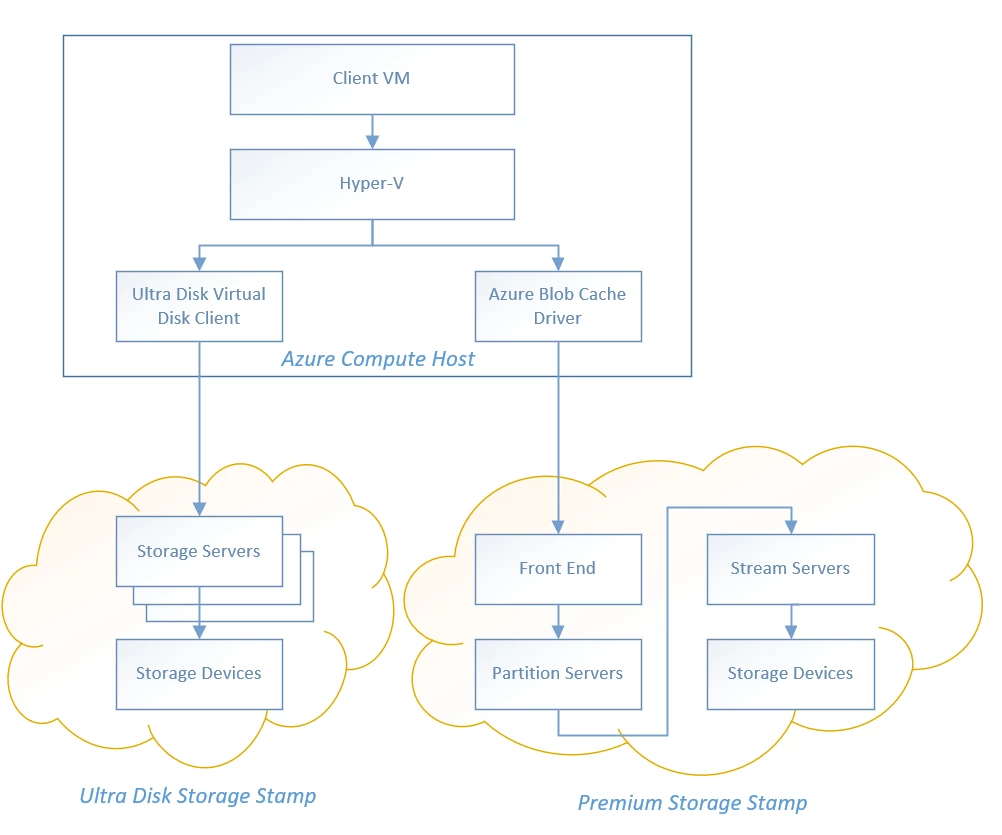Announcements, Azure Blob Storage, Azure Disk Storage, Storage
Azure Ultra Disk Storage: Microsoft’s service for your most I/O demanding workloads
Posted on
3 min read
Today, Tad Brockway, Corporate Vice President, Microsoft Azure, announced the general availability of Azure Ultra Disk Storage, an Azure Managed Disks offering that provides massive throughput with sub-millisecond latency for your most I/O demanding workloads. With the introduction of Ultra Disk Storage, Azure includes four types of persistent disk—Ultra Disk Storage, Premium SSD, Standard SSD, and Standard HDD. This portfolio gives you price and performance options tailored to meet the requirements of every workload. Ultra Disk Storage delivers consistent performance and low latency for I/O intensive workloads like SAP Hana, OLTP databases, NoSQL, and other transaction-heavy workloads. Further, you can reach maximum virtual machine (VM) I/O limits with a single Ultra disk, without having to stripe multiple disks.
Durability of data is essential to business-critical enterprise workloads. To ensure we keep our durability promise, we built Ultra Disk Storage on our existing locally redundant storage (LRS) technology, which stores three copies of data within the same availability zone. Any application that writes to storage will receive an acknowledgement only after it has been durably replicated to our LRS system.
Below is a clip from a presentation I delivered at Microsoft Ignite demonstrating the leading performance of Ultra Disk Storage:
Microsoft Ignite 2018: Azure Ultra Disk Storage demo
Below are some quotes from customers in our preview program:
“With Ultra Disk Storage, we achieved consistent sub-millisecond latency at high IOPS and throughput levels on a wide range of disk sizes. Ultra Disk Storage also allows us to fine tune performance characteristics based on the workload.”
– Amit Patolia, Storage Engineer, DEVON ENERGY
“Ultra Disk Storage provides powerful configuration options that can leverage the full throughput of a VM SKU. The ability to control IOPS and MBps is remarkable.”
– Edward Pantaleone, IT Administrator, Tricore HCM
Inside Ultra Disk Storage
Ultra Disk Storage is our next generation distributed block storage service that provides disk semantics for Azure IaaS VMs and containers. We designed Ultra Disk Storage with the goal of providing consistent performance at high IOPS without compromising our durability promise. Hence, every write operation replicates to the storage in three different racks (fault domains) before being acknowledged to the client. Compared to Azure Premium Storage, Ultra Disk Storage provides its extreme performance without relying on Azure Blob storage cache, our on-server SSD-based cache, and hence it only supports un-cached reads and writes. We also introduced a new simplified client on the compute host that we call virtual disk client (VDC). VDC has full knowledge of virtual disk metadata mappings to disks in the Ultra Disk Storage cluster backing them. That enables the client to talk directly to storage servers, bypassing load balancers and front-end servers used for initial disk connections. This simplified approach minimizes the layers that a read or write operation traverses, reducing latency and delivering performance comparable to enterprise flash disk arrays.
Below is a figure comparing the different layers an operation traverses when issued on an Ultra disk compared to a Premium SSD disk. The operation flows from the client to Hyper-V to the corresponding driver. For an operation done on a Premium SSD disk, the operation will flow from the Azure Blob storage cache driver to the load balancers, front end servers, partition servers then down to the stream layer servers as documented in this paper. For an operation done on an Ultra disk, the operation will flow directly from the virtual disk client to the corresponding storage servers.

Comparison between the IO flow for Ultra Disk Storage versus Premium SSD Storage
One key benefit of Ultra Disk Storage is that you can dynamically tune disk performance without detaching your disk or restarting your virtual machines. Thus, you can scale performance along with your workload. When you adjust either IOPS or throughput, the new performance settings take effect in less than an hour.
Azure implements two levels of throttles that can cap disk performance, a “leaky bucket” VM level throttle that is specific to each VM size, described in documentation. A key benefit of Ultra Disk Storage is a new time-based disk level throttle that is applied at the disk level. This new throttle system provides more realistic behavior of a disk for a given IOPS and throughput. Hitting a leaky bucket throttle can cause erratic performance, while the new time-based throttle provides consistent performance even at the throttle limit. To take advantage of this smoother performance, set your disk throttles slightly less than your VM throttle. We will publish another blog post in the future describing more details about our new throttle system.
Available regions
We are expanding the Ultra disk service to more regions. Please refer to the documentation for the latest on supported regions.
Virtual machine sizes
We are expanding Ultra disk service to additional virtual machine types. Please refer to the documentation for the latest on supported virtual machines.
Get started today
Refer to the instructions to get started with Ultra using the portal, ARM, or SDKs.
![for mark's blog[6] for mark's blog[6]](https://azure.microsoft.com/en-us/blog/wp-content/uploads/2019/08/0cf46527-dbb4-4a63-acfd-8bfdffa8cfb8.webp)